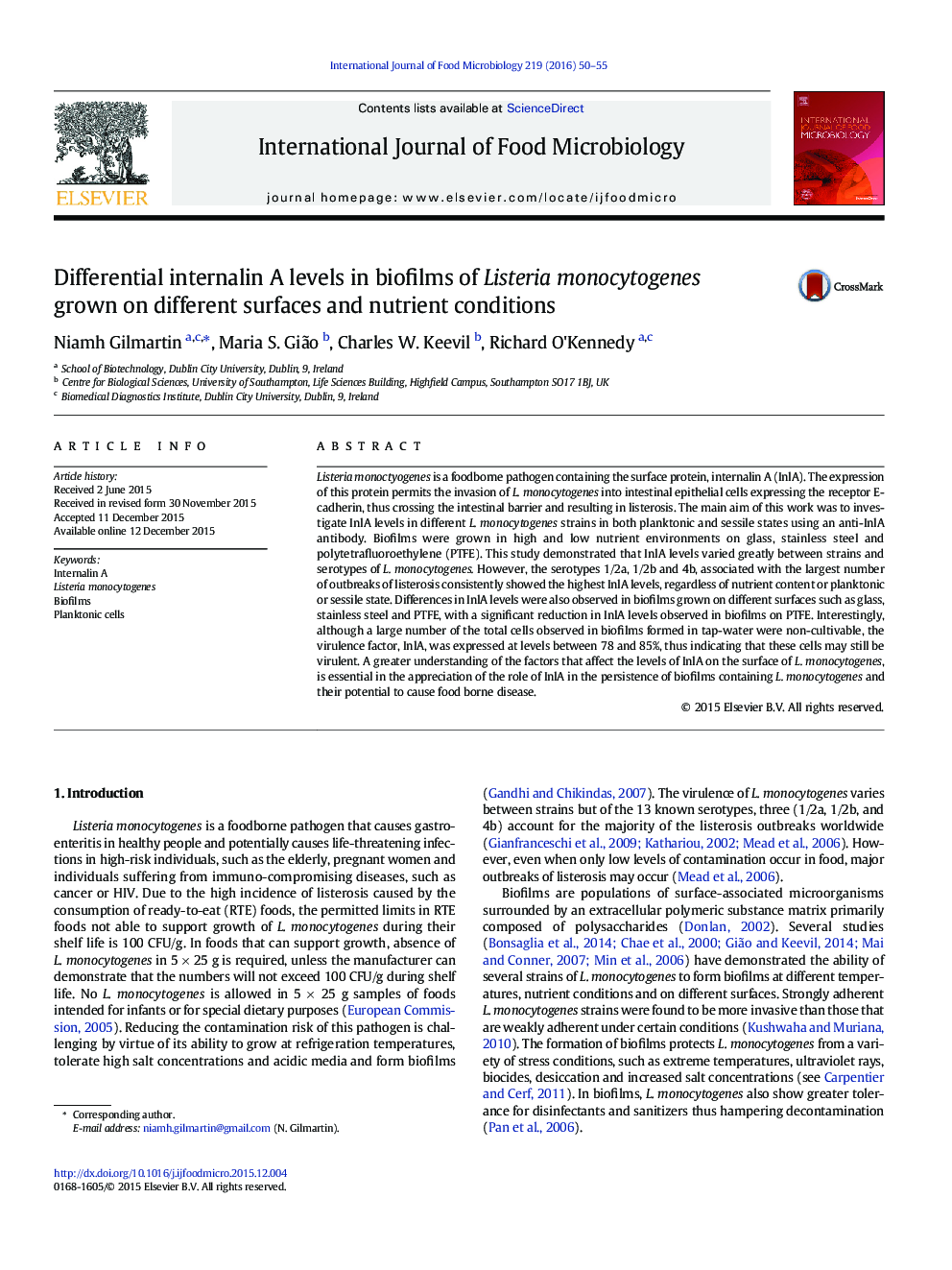| Article ID | Journal | Published Year | Pages | File Type |
|---|---|---|---|---|
| 4366364 | International Journal of Food Microbiology | 2016 | 6 Pages |
•Reduced InlA levels in L. monocytogenes biofilms when compared to planktonic cells•InlA levels highest in the L. monocytogenes serotypes 1/2a, 1/2b and 4b•InlA expression of 78-85% show viable but non-cultivable cells may be virulent.•InlA levels in biofilms were not affected by low nutrient conditions
Listeria monoctyogenes is a foodborne pathogen containing the surface protein, internalin A (InlA). The expression of this protein permits the invasion of L. monocytogenes into intestinal epithelial cells expressing the receptor E-cadherin, thus crossing the intestinal barrier and resulting in listerosis. The main aim of this work was to investigate InlA levels in different L. monocytogenes strains in both planktonic and sessile states using an anti-InlA antibody. Biofilms were grown in high and low nutrient environments on glass, stainless steel and polytetrafluoroethylene (PTFE). This study demonstrated that InlA levels varied greatly between strains and serotypes of L. monocytogenes. However, the serotypes 1/2a, 1/2b and 4b, associated with the largest number of outbreaks of listerosis consistently showed the highest InlA levels, regardless of nutrient content or planktonic or sessile state. Differences in InlA levels were also observed in biofilms grown on different surfaces such as glass, stainless steel and PTFE, with a significant reduction in InlA levels observed in biofilms on PTFE. Interestingly, although a large number of the total cells observed in biofilms formed in tap-water were non-cultivable, the virulence factor, InlA, was expressed at levels between 78 and 85%, thus indicating that these cells may still be virulent. A greater understanding of the factors that affect the levels of InlA on the surface of L. monocytogenes, is essential in the appreciation of the role of InlA in the persistence of biofilms containing L. monocytogenes and their potential to cause food borne disease.
